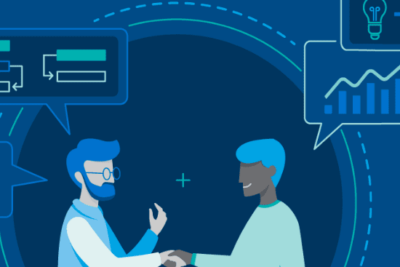What campus IT can learn from Uber, Lyft, and Google Maps
Business functions around campus are demanding more data, more software solutions, and more user-facing applications. But whether they know it or not, they also need more integration to ensure this developing technology works together seamlessly.
As central IT units struggle to meet demand, projects are taking longer than anticipated to complete, others languish in the queue, and opportunities to build out new services are often missed. Playing catch-up to campus requests is simply not sustainable: Units will inevitably lose faith in central IT and create workarounds, but forging ahead independently is not a viable solution.
The CIO’s challenge goes beyond keeping people happy in the short term. Integration capabilities will increasingly be a source of competitive differentiation, so integration must be a campus-wide strategic priority, not a last-minute IT line item. Colleges and universities that harness data across silos for institution-level efforts will see greater successes for students, faculty, and administration.
That’s why the IT Forum will be researching approaches to enterprise integration across the next year. Get in touch to tell us about the specific headaches, roadblocks, and successes at your institution.
In the meantime, for those considering new approaches to connectivity, here’s how one approach to enterprise architecture, API-led integration, is already reaping rewards in higher education.
Strategic integration: The case for APIs in higher ed
Some institutions that have made the shift from integration service to integration strategy are finding success in imitating industry API practices, such as seamless integrations that represent contemporary living.
When you use Google Maps on your phone to find a new location, ride-sharing services Uber and Lyft appear as transportation options, complete with estimated trip cost. That’s because those two apps made an open API to surface some of their data processes, and someone at Google wrote an API to tell the applications how to interact. Your Maps app asks Uber and Lyft to run the ride and return the projected cost. Like all APIs, this interaction facilitates a send and receive message between two applications/data sources:

Through APIs, developers and users can receive defined access to proprietary software or data. It’s like taking a page from a book and layering a cut-through cipher on top to show only particular words: The book page is the wealth of available data, the cipher is the API, and the visible words are the data points made available through the interface.
By surfacing data through APIs, institutions achieve controlled data sharing and end users can access and manipulate available data without the need to physically move and store data in various places. For IT leaders and their peers on campus, investment in APIs holds great potential.
APIs are dynamic and replicable
Ad hoc point-to-point integrations require dedicated human resources to code the pipeline from one system to another. Robust as these provisions can be, integration requires an investment of time, resources, and money. Point-to-point integrations are also brittle and require substantial modifications with system updates.
But, with an API strategy, each new interface leverages preceding ones. Once an API is built, it is reusable. Interfaces or fragments of the coding that built them can be replicated in new APIs serving different business needs. When each new integration effort builds off already completed projects, IT can more rapidly move data and capabilities to those who want to act on them.
APIs are developer and innovation friendly
When APIs surface data, correct documentation of the protocols involved is useful for developers across campus, whether they’re IT staff residing in functional units or students and faculty with entrepreneurial instincts.
Putting the right data flows into the hands of campus constituents with niche functionality desires can foster grassroots innovation. Users can build the apps they need when they need them. By using central developer hubs, documents pertaining to APIs around institutional data can be made available—from funding deadlines and dining hall menus to course lists and class schedules—and perceptive users can connect the nodes in innovative and productive ways.
APIs have inbuilt governance
By building an API infrastructure, higher education CIOs at institutions like University of California, Berkeley, Northwestern University, and Brigham Young University are surfacing centralized data to users on- and off-campus.
Governance can be built into APIs in line with user need, central access requirements and policies, and internal business process requirements. For units that require access to centralized data, APIs can be built for individual business processes to create data flows that reflect institutional workflows and standards. For the CIO whose constituents and data owners have particular concerns, APIs can be programmed to reflect how they want “their” data to be presented to others (though there are nuances—see our work on the importance of institutional ownership for more details).
10 ‘no-regret’ decision support analyses
Choosing your strategy
API-led integration promises solutions to a wealth of speed, volume, and governance issues on campuses with distributed functions all trying to leverage central data. But the approach demands significant investment and institutional buy-in. For many institutions, API infrastructure (or comparable capability) is far in the future, but taking a step in this direction is imperative for all. That’s why it’s an issue sitting at the top of our IT Forum research agenda.
As we work to understand the broader promises and perils of various enterprise integration strategies and the best ways to gain buy-in for integration as a strategic imperative, we’d love to hear from schools experimenting in this area.
More Blogs

Bringing a digital strategy to life

Institutional Research and IT are working together—here's what that means for campus analytics
